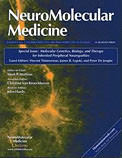Soukupova J, Pohlreich P, Seemanova E. Neuromolecular Med. 2011 Sep;13(3):204–11. Epub 2011 Aug 11. IF: 4,657

Abstract
Ataxia telangiectasia (AT) is a genomic instability syndrome characterised, among others, by progressive cerebellar degeneration, oculocutaneous telangiectases, immunodeficiency, elevated serum alpha-phetoprotein level, chromosomal breakage, hypersensitivity to ionising radiation and increased cancer risk. This autosomal recessive disorder is caused by mutations in the ataxia telangiectasia mutated (ATM) gene coding for serine/threonine protein kinase with a crucial role in response to DNA double-strand breaks. We characterised genotype and phenotype of 12 Slavic AT patients from 11 families. Mutation analysis included sequencing of the entire coding sequence, adjacent intron regions, 3'UTR and 5'UTR of the ATM gene and multiplex ligation-dependent probe amplification (MLPA) for the detection of large deletions/duplications at the ATM locus. The high incidence of new and individual mutations demonstrates a marked mutational heterogeneity of AT in the Czech Republic. Our data indicate that sequence analysis of the entire coding region of ATM is sufficient for a high detection rate of mutations in ATM and that MLPA analysis for the detection of deletions/duplications seems to be redundant in the Slavic population.